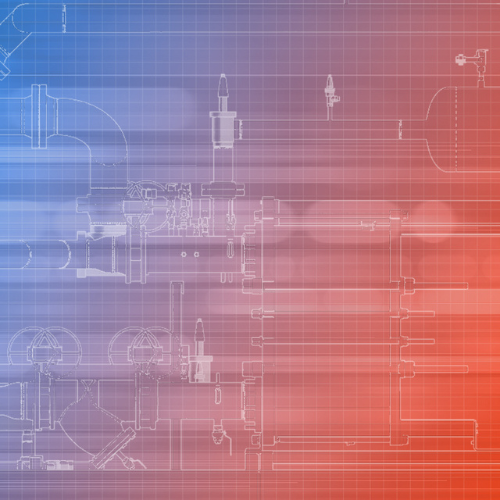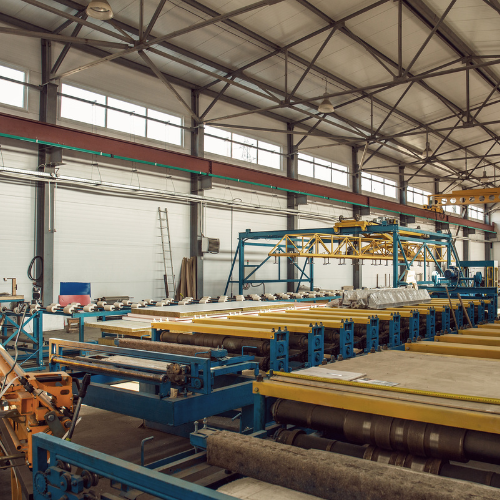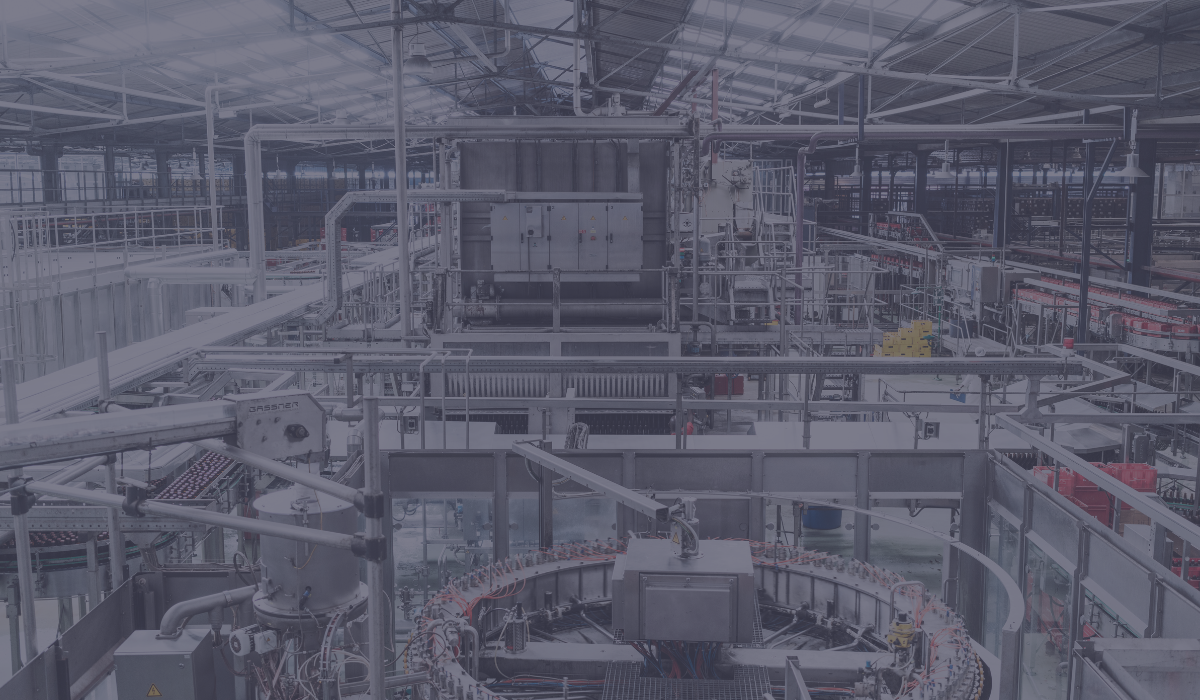Ammonia heat pumps can now reach even higher temperatures, making this efficient technology suitable for an increasing number of applications within the Food & Beverage Production sector as well.
As the world moves to decarbonize the heating sector, the future of the common natural gas boiler is becoming more uncertain. These systems are notoriously inefficient and rely on a rapidly depleting resource—fossil fuel. Meanwhile, the already environmentally-friendly ammonia heat pump design is continually improving, now capable of 400% efficiency at 185°F (85°C), also making it suitable for applications such as dairies and breweries.
Is it time to make the switch to ammonia heat pumps?
Gas Boilers Get Left Behind
Heating is a key requirement for many processes in the Food & Beverage sector—whether during production or after. For dairies and breweries, for example, 185°F is needed to sterilize bottles and avoid contamination of the product via pasteurization. After production, most facilities also need hot water for the clean-up process.
The required heat usually comes from steam generated by natural gas boilers, and facilities have used natural gas boilers for many decades without question—it’s always worked, so why change it? But just because it works doesn’t mean it works well…
Natural gas boilers are highly inefficient systems by design and a lot of heat is lost in the process of converting steam to water. With older systems, as little as 60% of the heat generated is left after it is distributed throughout the system, losing heat along the way. But with cheap costs and an abundance of fossil fuels, this was not considered a challenge.
However, things have changed, and the availability of natural gas and the rising costs of electricity have become a bigger concern (also a challenge if strictly electrification measures are chosen). Plus, the introduction of the carbon tax adds additional costs for facilities running natural gas boilers. Suddenly, a boiler is no longer such an inexpensive way to produce heat.
As these aging natural gas boilers reach the end of their lives, the decision to replace like for like is not as easy as it was 40 years ago. Especially not when one considers that heat pumps can last for many decades if properly maintained.
What about Electrical Boilers?
Electrical boilers are a cheaper alternative to natural gas, also reducing direct emissions by limiting the use of fossil fuels. With a global push toward decarbonization, these seem like the ideal solution. Except, these systems use an exorbitant amount of electricity, which quickly adds up on the utility bill—especially considering the climbing electricity cost around the world.
Plus, these boilers are less efficient than heat pumps. In the best-case scenario, for every unit of electricity the boiler uses, one unit of heat is generated (using 1 kW of electricity to create 1kW of heat). Compare this to a heat pump where one unit of electricity generates four units of heat, and the 400% efficiency of heat pumps suddenly becomes a much more attractive business case.
Waste Not, Want Not
Heat pumps are nothing new—they have existed as long as the refrigeration cycle has. A heat pump is simply looking at the same schematic but from the other (condenser) side. The only difference is that heat used to be viewed simply as something to get rid of, whereas now industry realizes the benefit of using this waste heat aka thermal energy.
Food & Beverage facilities usually have a cooling requirement too—like cooling down the milk or beer itself—using a separate refrigeration system. The heat removed from the product is then vented and wasted. The facility creates heat via cooling and throwing it away, only to create heat separately using another system. These two systems often work concurrently, wasting a lot of energy and driving up utility bills.
If the facility had a heat pump integrated into its refrigeration system, it could capture and use the waste heat from the cooling process.
This process of capturing waste heat is called heat recovery, and it is a unique benefit of using a heat pump. This waste heat provides an incredible opportunity to feed the cold source entry for high-temperature heat pumps when compared to other cold-source options like geothermal, air sources, and/or wastewater. It would provide a higher quality infeed temperature, making the heat pump more efficient and capable of higher discharge temperatures at a higher coefficient of performance (COP).
Heat Pumps Reaching Higher Temperatures
With ever-improving components and technical know-how, industrial ammonia heat pumps can now capture waste heat to deliver heat up to 185°F, making the equipment suitable for use in additional Food & Beverage processes—like for breweries and diaries. Even for processes that require higher heat, a heat pump can still be beneficial, using waste heat to reduce the temperature lift required. The 185°F is essentially created by using the waste heat (and very little additional power).
Any process that includes both heating and cooling can benefit from the addition of heat pumps. Even if these processes do not happen simultaneously, the heat pump can capture waste heat from the refrigeration process to heat hot water and store it in a thermal storage tank for later use. A heat pump also works well for applications where hot air is needed to ventilate a room after production.
This solution isn’t limited to just the Food & Beverage industry; other processes can also benefit from ammonia heat pumps—from automotive industries and district heating and cooling networks to hospitals and campuses.
Ammonia is the Best Solution
Not all heat pumps are the same and the refrigerant used matters. Ammonia (R717/NH3) has zero Ozone Depletion Potential (ODP) and a Global Warming Potential (GWP) of 0, making it the most environmentally friendly refrigerant. Switching to heat pumps is also a good way to reach sustainability or carbon footprint goals. It’s one piece of equipment that can make a massive difference in both Scope 1 and 2 emissions.
But ammonia’s benefit extends beyond just the obvious environmental gains and a history of stable (and inexpensive) pricing. This naturally-occurring refrigerant has been around for many decades and upwards of 80% of the Food & Beverage industry in North America already use ammonia refrigerant in their refrigeration systems, making the addition of an ammonia heat pump an easy integration.
The properties of ammonia are uniquely favorable for both heating and cooling. This means that a single system can be used for both heating and cooling, rather than having separate systems that increase the maintenance requirement and equipment footprint. Any additional space needed for equipment is space lost for production.
Removing the CAPEX Barrier
Although the OPEX savings with a heat pump far outweigh the initial CAPEX investment, the reality is that most facilities do not have that CAPEX available, and if they do, they prefer to use it to increase production directly. That’s where energy servicing companies (ESCOs) come in, using the savings to fund the low-carbon approach and removing the CAPEX burden by taking on the entire installation process. This is a great opportunity for companies to switch to more efficient heat pumps without having to invest additional capital to do so.
In some regions, subsidies and grants are available for better electricity use and reducing emissions and fossil fuel use. Swapping a natural gas boiler for a heat pump could also make a project eligible for such grants, further reducing the financial investment required to make the transition to heat pumps.
Right Solution for Your Facility?
A feasibility study is a good place to start to see if the addition of an ammonia heat pump could benefit a facility, and how it compares to boilers. The study will investigate a particular facility’s position and needs, considering its unique utility usage, carbon footprint, and sustainability goals (amongst others).
The study then establishes a pathway for achieving these goals over time based on the facility's needs. It will advise a plan of action and how much it will cost, also highlighting potential savings in concrete numbers. By investigating different technologies and solutions, the impact on net positive cash flow can be seen, making an informed decision possible.
Making the Shift
Now that ammonia heat pumps can achieve 185°F, the Food & Beverage sector has a great opportunity to lower utility bills and emissions while improving production and efficiency. Replacing aging natural gas boilers with an industrial ammonia heat pump is a “no-brainer” – it makes financial sense and can give facilities a competitive advantage in a world where utility costs are always on the rise.
Have you considered upgrading?

About the Author
With 35 years of experience in the refrigeration industry as a professional engineer and an early adopter of CO2 refrigerants, Benoit Rodier is considered the go-to expert on natural refrigerant technology. He is the Director of Business Development at CIMCO and heads up the Decarbonization group. With an intrinsic knowledge of thermal management’s impact on various building aspects, Benoit’s mission is to reduce carbon emissions by devising tailored plans that align with customers' financial and environmental goals.
Benoit is also a teacher and mentor who values sharing his expertise with the next generation of engineers, recognizing that they have a significant role to play in a sustainable future. He’s passionate about technological development and industry trends and believes in the power we all have to make better choices for the future.
Related Posts

Industrial Heat Pumps are the Past, Present and Future

Interconnected Efficiency: Leveraging Ammonia Heat Pumps for Sustainable Manufacturing


